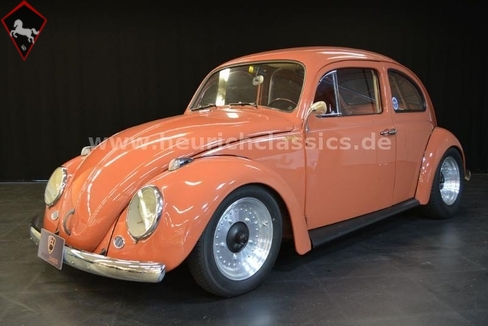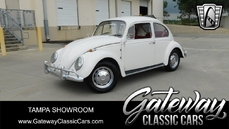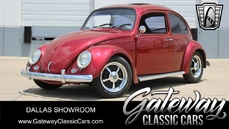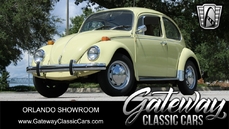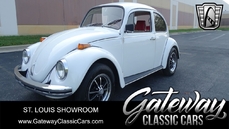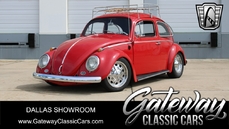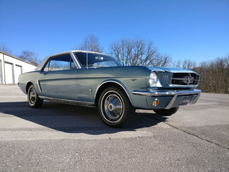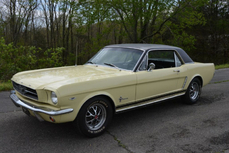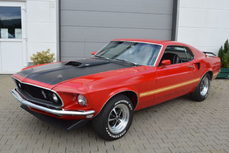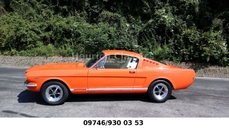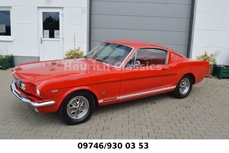Volkswagen Beetle Typ1 Cal-Look 2,1l 180PS, einmaliger Zustand! 1963
General description :
Angeboten wird ein 1963´ Standard Käfer der 1999-2001 kompromisslos zu einem Cal-look Käfer umgebaut wurde.
Für den Aufbau wurde ein Standard Käfer verwendet, der serienmäßig ohne Zierleisten und anderen Zierrat ausgeliefert wurde.
Das Häuschen wurde für den Aufbau abgehoben, die Endspitzen und Heizkanäle wurden neu eingesetzt, die Bodengruppe gestrahlt und dann alles lackiert. Kein U-Schutz, nur Lack.
Alle Anbauteile sind aus Blech, Kotflügel, Hauben usw., nicht wie oft bei solchen Aufbauten GFK. Original VW Farbton Korallenrot.
Als Motor wurde ein Typ1 Motor hergenommen, um die Originaloptik auch im Motorraum fortzusetzen.
Der Motor wurde von einem der besten Motorenbauer in der VW Szene, Udo Becker vorgenommen. Hier wurden selbstredend auch nur die besten und vor allem standfesten Teile verwendet.
Der Motor ist ein Langhuber mit 2,1Liter., d.h. 82er Schmiedekurbelwelle von Gene Berg und 90,5er Kolben/Zylinder von Mahle. Die Köpfe haben 44er EV und 37,5AV bei einer Verdichtung von 10:1.
Gene Berg Kipphebel, erweiterter Ölsumpf, Ölkreislauf Full-flow, 48er Weber Vergaser, Gene Berg Fächerkrümmer, Setrab Ölkühler usw.
Der Motor wurde vor 1000km von Udo Becker vorsorglich komplett zerlegt und revidiert, hier gab es keinerlei Auffälligkeiten. Somit nur neu gelagert abgedichtet und wieder zusammengebaut.
Danach wurde er auf dem Leistungsprüfstand abgestimmt und ideal eingestellt. 179 PS bei 7010 U/min, 211 NM bei 3460 U/min!!!!
Das Getriebe ist ein Close Ratio Gearbox, 4,125er Achse, ZF-Sperre, 3.Gang 1,46, 4.Gang 1,12. Verstärkte Seitendeckel, Gene Berg Aufhängung, Cup Streben, Sway Away Wellen, schmale Achse.
Auch das Getriebe wurde vor 1000km rein vorsorglich komplett revidiert und zeigte auch keinerlei Auffälligkeiten.
Gesamtlaufleistung nach Aufbau liegt bei ca. 5000km.
Der Käfer hat bei ca. 6-8 1/4Meile Rennen teilgenommen, die restlichen Km wurde er auf Treffen gefahren. Seit Aufbau definitiv kein Regen gesehen.
Bestzeit 1/4 Meile ist 12,91sec bei 178,8km/h.
Als weiteres Zubehör wurde eine gekürzte NOS Bundbolzenachse verbaut, TCI Line-look, Centerline Felgen, Wiechers Alu-Bügel, Autometer Shiftlight, Armaturen für Öl-Temp und Druck, 2 Retro Rennsitze, Empi Racing Lenkrad usw.
Absolut zuverlässiges, standfestes Fahrzeug, welches in der Szene als "Sauerkraut" bekannt und gefürchtet ist.
Überzeugen Sie sich selber bei einem Besichtigungstermin in unserer Ausstellung.
Das Fahrzeug kann auf Wunsch gerne zu Ihnen nach Hause geliefert werden.
https://home.mobile.de/HEURICHCLASSICS#des_229562850
1963 Volkswagen Beetle Typ1 Cal-Look 2,1l 180PS, einmaliger Zustand! is listed sold on ClassicDigest in Kohlgraben 2bDE-97799 Rupboden by Auto Dealer for €31999.
Car Facts
Car type : Car Make : Volkswagen Model : Beetle Typ1 Model Version : Cal-Look 2,1l 180PS, einmaliger Zustand! Engine size : 2.1 Model Year : 1963 Sub type : Sedan Location : Kohlgraben 2bDE-97799 Rupboden
Sold
Seller Information
Sold
People who viewed this Volkswagen Beetle Typ1 also viewed similar Volkswagen listed at ClassicDigest
Other cars listed for sale by this dealer
About Volkswagen
The Volkswagen story is indeed an intriguing tale of innovation, resilience, and post-war revival, marked by various models that have become iconic in automotive history.The People's Car (Volkswagen): Initially envisioned by Adolf Hitler in the 1930s as a "people's car" or "Volkswagen" in German, the idea was to create an affordable and practical vehicle for the German people. This concept led to the development of the Volkswagen Beetle (or the Type 1), designed by Ferdinand Porsche.
Post-War Challenges: After World War II, Volkswagen faced significant challenges. The factory was heavily damaged, and the brand's association with the Nazi regime led to a lack of interest in the car in some regions.
British Intervention - The British Army & Ivan Hirst: The British Army took control of the factory in the immediate post-war period. Major Ivan Hirst, a British Army officer, played a crucial role in reviving Volkswagen. He recognized the potential of the Beetle and advocated for its production, convincing the British military to order several thousand cars. This decision helped jumpstart the brand's revival.
Export Success and the Beetle's Global Appeal: The Beetle gained popularity not only in Germany but also globally, becoming an icon of affordable motoring. Its simple, reliable design and unique appearance made it a favorite among consumers worldwide.
Model Evolution: Over the years, Volkswagen introduced various models alongside the Beetle, each contributing to the brand's growth:
Type 2 (VW Bus or Transporter): Introduced in the 1950s, it became an iconic symbol of the hippie movement in the 1960s, loved for its spaciousness and versatility.
Golf (Rabbit in the U.S.): Launched in the mid-1970s, the Golf (or Rabbit in the U.S.) marked a shift towards front-wheel-drive, modern design, and hatchback practicality, becoming a cornerstone of the brand's success.
Passat, Jetta, and Other Models: Volkswagen expanded its lineup with models like the Passat and Jetta, catering to different market segments.
Challenges and Innovations: Despite success, Volkswagen faced challenges, including quality issues in the 1970s. However, the brand continued to innovate and develop new models and technologies.
Rise of the GTI and Global Expansion: The 1980s saw the rise of the iconic Golf GTI, a high-performance version that sparked the hot hatch trend. Volkswagen also expanded its global presence during this period.
The British intervention in reviving Volkswagen after World War II played a pivotal role in the brand's resurgence. While there might have been some tensions or competition among automotive companies in the 1950s and 1960s due to Volkswagen's post-war success, the brand's ability to produce innovative and popular models solidified its place in automotive history.
